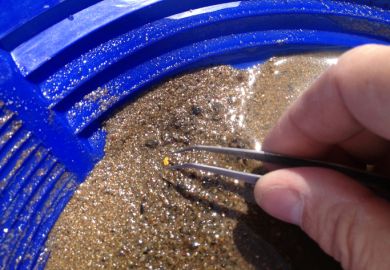Children who do not learn to speak are a problem; they cause concern and frustration. In our own study of selectively mute children, those who can speak but do not do so outside the home and family, there was frustration and incomprehension in those around, and the young people, when grown up, expressed their anxiety and despair.
This book describes children who cannot speak, either for neurological reasons - aphasia, dysphasia or severe dyslexia resulting in an inability to speak fluently and coherently - or those who have emotional or psychological reasons for their inability to speak, including those with autism or autistic spectrum disorder (although these are almost certain to have an organic neurological basis).
In the introduction, Laurent Danon-Boileau, a linguist and psychoanalyst, describes how he works, insisting that each patient is an individual and that he tries to work in a responsive way without a preset programme. Patients are seen three times a week. Six cases are described, and episodes of interaction are given in detail. In each case, a relationship is built up and attempts are made to structure and then intervene in the interaction. It is slow, patient work, drawing on the author's knowledge of how language is structured and acquired, and also on the psychoanalytic method of child analysis.
At first one thinks: interesting, but how could one use this, can it be applied in ordinary contact with children who are struggling? What seems crucial is the capacity to observe small, subtle changes in the child when playing or drawing and the sensitivity necessary to contribute to this activity without being too threatening. The result is that the child is liberated and can see new possibilities; an emotional block or an inability to symbolise shifts, and the child moves nearer to speech. Danon-Boileau feels that he draws constantly on his capacity to be inventive, and this certainly comes across in the case examples. Hopefully these are aspects that could be used in more routine settings.
The question he poses that remains unanswered is when can absent speech and the response to treatment be understood in terms of cognition, language-acquisition problems or psychic process? Perhaps this enigma and his capacity to move between these areas is what is crucial.
The author is very clear that treatment should not stop once the child speaks. Time is needed to consolidate the developments and help the child. There may be a need to accept the limitations of a physical difficulty, or to recognise the emotional or psychological conflicts that prevented speech and to work on these.
The book's appendix is the author's statement of his understanding of speech and its difficulties. He describes speech as occurring at the meeting point of the perception of the outside world and the way this is processed by the brain (the cognitive pole), the transformation of thought into words (the aphasic pole), and the expression of wishes with regard to others (the symbolic pole); and argues that each of these determines language development. Understanding speech in this way is helpful and can provide a guide to intervention in a particular child.
Danon-Boileau offers some useful thoughts on how language is acquired, the relationship between speaking, reading and writing and the importance of each, and some interesting ways of reaching children with these problems; but the need for one-to-one time of sufficient duration when observation, insight and inventiveness can flourish remains problematic. One hopes the book will inspire some to try.
Judith Trowell is a consultant child and adolescent psychiatrist, Tavistock and Portman NHS Trust.
The Silent Child: Exploring the World of Children who do not Speak
Author - Laurent Danon-Boileau
ISBN - 0 19 823786 3
Publisher - Oxford University Press
Price - £14.99
Pages - 188
Translator - Kevin Windle



